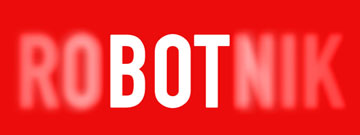Misją Instytutu jest dzialalność naukowo-badawcza prowadząca do nowych rozwiązań technicznych i organizacyjnych użytecznych w kształtowaniu warunków pracy zgodnych z zasadami bezpieczeństwa pracy i ergonomii oraz ustalanie podstaw naukowych do właściwego ukierunkowywania polityki społeczno-ekonomicznej państwa w tym zakresie.

AIR TEMPERATURE IN THE WORKPLACE
Legal basis
§ 30 and § 32 para. 1 of the Regulation of the Minister of Labour and Social Policy of September 29, 1997. on general provisions of health and safety at work (consolidated text: Journal of Laws of 2003, No. 169, item 1650)
The general health and safety regulations impose an obligation on the employer to ensure an appropriate temperature, depending on the type of work performed, not lower than 14 °C (287 K), while in light physical work and office rooms not lower than 18 °C (291 K).
MEASUREMENT OF THERMAL STRAIN AT WORK (COLD ENVIRONMENT, HOT ENVIRONMENT)
Legal basis
§ 3 of the Regulation of the Minister of Health of February 2, 2011. on testing and measurements of agents harmful to health in the work environment (Journal of Laws No. 33, item 166)
The employer, not later than 30 days from the day of starting the activity, is obliged to perform tests and measurements of a factor harmful to health in the work environment.
Legal basis
Regulation of the Minister of Family, Labor and Social Policy of June 12, 2018 regarding the highest admissible concentrations and intensities of factors harmful to health in the working environment (Journal of Laws of 2018, item 1286)
Annex 2 LIST OF THE VALUES OF THE HIGHEST ALLOWANCES OF PHYSICAL HARMFUL FACTORS FOR HEALTH IN THE WORKING ENVIRONMENT
C. Microclimate
1. A hot microclimate (environment)
1.1. The criterion for classifying the thermal environment to the area of the hot microclimate is the value of the Predicted Mean Vote (PMV) index in the range above +2.0.
1.2. The thermal load in the hot microclimate is determined by the WBGT index expressed in degrees Celsius (° C).
1.4. Definition of terms and methods for measuring the hot microclimate are defined by Polish Standards.
2. A cold microclimate (environment)
2.1.Cold microclimate refers to the conditions of the thermal environment for which the air temperature is below 10 ° C, and the speed of air movement and its relative humidity are greater than 0.1 m / s and 5%, respectively.
2.2. The permissible general cooling of the organism is determined by the value of the IREQ min index (m2 · K · W-1), which depends on the conditions of the thermal environment, metabolism rate (energy expenditure) and clothing parameters (insulation and air permeability).
2.4. Definitions of concepts and methods for measuring and assessing the cold microclimate are defined by Polish Standards.
Legal basis
§ 12 of the Regulation of the Minister of Health of February 2, 2011. on testing and measurements of agents harmful to health in the working environment (Journal of Laws No. 33, item 166)
In case of cold or hot microclimate, the measurements are performed once a year.
If during the last two tests the values of microclimate indexes did not exceed the permissible values for the daily 8-hour working time, the employer may perform them once every two years.
WORKING IN COLD AND HOT ENVIRONMENT - SPECIAL CASES
Adolescent workers
Legal basis
Regulation of the Council of Ministers of August 24, 2004 on the list of work prohibited to adolescents and the conditions of their employment for some of these works (with amendments)
Annex No. 2 LIST OF CERTAIN TYPES OF WORK PROHIBITED TO ADOLESCENTS II. Work in exposure to harmful chemical, physical and biological agents 3. Work in exposure to harmful physical agents (points 11-13)
Works in rooms where the air temperature exceeds 30°C and relative humidity of the air exceeds 65%, as well as in the conditions of direct exposure of the open radiation source, including in particular: drying room operation, sintering and roasting, rolling, smelting, spilling and casting of metals or their alloys, repair of metallurgical furnaces, operation of furnaces for thermal heating, glassworks and glass processing plants - operation of smelting and stress-relieving furnaces, repair of glass furnaces, glass forming and all work on platforms of active glass smelting furnaces, works on firing dolomite and lime, cooking asphalt and working with hot asphalt, direct service of baking ovens, work on the preparation of caramel in cauldrons.
Works at air temperature lower than 14 ° C, as well as relative humidity higher than 65%, including in particular: work in cold stores, food stores, freezers, in constant contact with water, brine and other liquids, and earthworks in wet ground - drainage and irrigation, as well as work in conditions that permanently sow clothing, causing a disturbance of heat balance in young workers.
Works in an environment with large fluctuations in microclimate parameters, especially in the case of sudden changes in air temperature in the range exceeding 15 ° C, in the absence of the possibility of using at least a 15-minute adaptation in rooms with an indirect temperature.
Legal basis
Regulation of the Council of Ministers of August 24, 2004 on the list of work prohibited to adolescents and the conditions of their employment for some of these works (with amendments)
Annex No. 2 LIST OF CERTAIN TYPES OF WORK PROHIBITED TO ADOLESCENTS BY WHICH EMPLOYMENT OF ADOLESCENTS IN AGE ABOVE 16 YEARS IS ALLOWED II. Works in exposure to harmful effects of chemical, physical and biological agents. 3. Works in exposure to harmful effects of physical factors
Works in a microclimate of up to 26 °C thermal load WBGT index, performed up to 3 hours a day, provided that the energy expenditure norms specified in section I par. 1 point 2 of Annex No. 1 to the Regulation and provide juveniles with sufficient amount of appropriate beverages and ten-minute breaks after every fifty minutes of work, i.e. works:
a) for the operation of metallurgical machines and devices and rolling machines in iron and steel works, performed by boys, if the following conditions are met:
- The adolescent is gradually introduced into the tasks envisaged in the apprenticeship, starting from the observation of production processes, through initial exercises at the training positions and auxiliary work while servicing the work stations designated by the curriculum.
- Full staffing is ensured at work positions related to apprenticeship education.
- A system of standard and piecework works cannot be applied to juveniles.
- In the steelworks, rolling mills and blast furnaces, the time of juvenile classes may not exceed 2 hours a day.
- Practical learning of the juvenile profession cannot take place in sinter plants, in the bearing hall and the throat of blast furnaces, in casting and casting halls, in steelworks and rolling mills in plates, pipes and wire.
Works in the cold microclimate, excluding works in cold stores and freezers, under the following conditions:
a) Equipping young people with clothing with adequate heat protection, in accordance with the requirements of the Polish Standard.
b) Providing hot drinks at work stations.
c) Complying with energy expenditure not exceeded the standards specified in the section I paragraph 1 point 2 of Annex No. 1 to the Regulation and restrictions to 3 hours a day of working time for juveniles in rooms with a temperature lower than 10 ° C.
In the event that it is necessary to perform work without the use of protective gloves, it is allowed to employ juveniles under conditions in which the value of the Wind Chill Index (WCI) does not exceed 800 kcal · m-2 · h-1.
Women during pregnancy and breast-feeding periods
Legal basis
Regulation of the Council of Ministers of April 3, 2017 on the list of works that are onerous, dangerous or harmful to the health of pregnant women and women who breast-feed their baby
Annex LIST OF WORKS ONEROUS, DANGEROUS OR HARMFUL FOR HEALTH OF PREGNANT AND PREGNANT WOMEN'S CHILDREN II. Works in cold, hot and changeable microclimate
For pregnant and breast-feeding women:
1) Work carried out in a hot microclimate under conditions in which the PMV (predicted mean vote), determined in accordance with the Polish Standard for this work, is greater than 1.0.
2) Work carried out in a cold microclimate under conditions in which the PMV (predicted mean vote), determined in accordance with the Polish Standard for this work, is less than -1.0.
3) Works carried out in an environment with large fluctuations in microclimate parameters, especially in the case of sudden changes in air temperature in the range exceeding 15 ° C, in the absence of the possibility of using at least a 15-minute adaptation in an intermediate temperature room.
DRINKS AND PREVENTIVE MEALS
Legal basis
§ 3 - 4 Regulation of the Council of Ministers of May 28, 1996 on preventive meals and drinks (Journal of Laws of 1996, No. 60, item 279)
§ 3. 1. The employer shall provide meals to employees performing work:
1) Related to physical effort, causing during the working shift an effective energy expenditure of the organism above 1500 kcal (6280 kJ) in men and over 1000 kcal (4187 kJ) in women, performed in enclosed spaces, where for technological reasons the temperature is constantly maintained below 10 °C or the thermal load index (WBGT) is above 25 ° C.
2) Related to physical effort, causing during the working shift an effective energy expenditure of the body above 1500 kcal (6280 kJ) in men and over 1000 kcal (4187 kJ) in women, performed in the open in the winter; the period from 1 November to 31 March is considered as a winter period.
§ 4. 1. The employer provides drinks to employed employees:
1) Under hot microclimate conditions, characterized by the thermal load index (WBGT) above 25 ° C.
2) Under cold microclimate, characterized by the value of the Wind Chill Index (WCI) above 1000.
3) When working in the open air at an ambient temperature below 10 ° C or above 25 ° C.
4) At work stations where the temperature caused by weather conditions exceeds 28 ° C.


